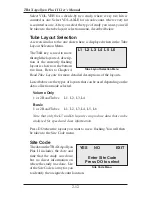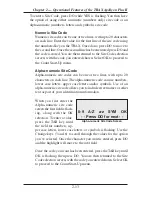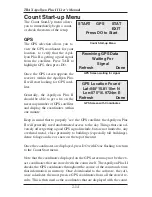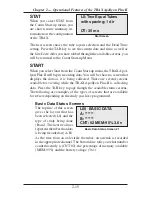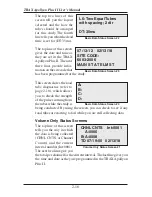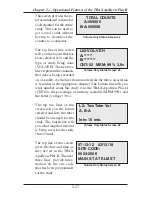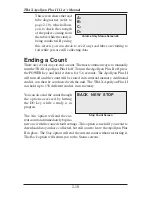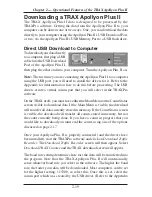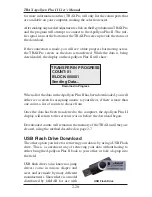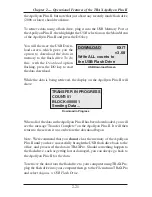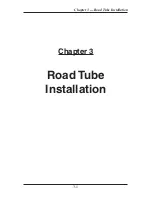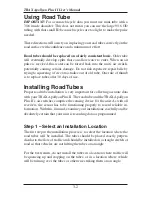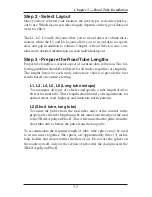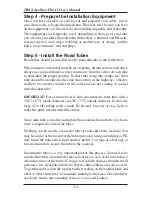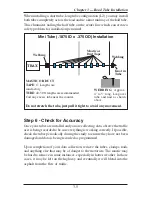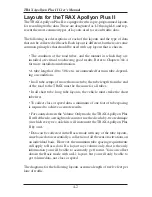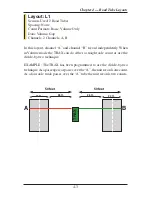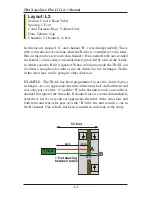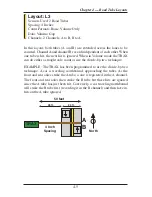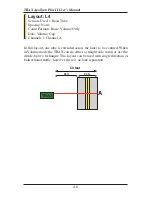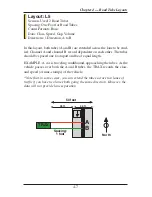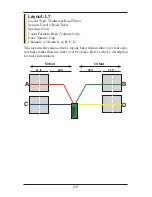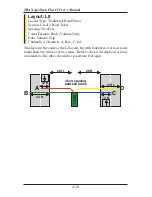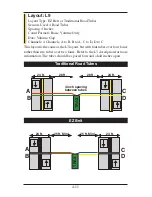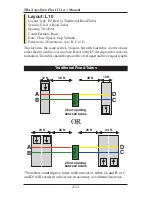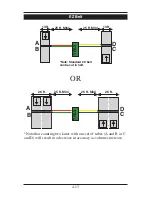
TRAX Apollyon Plus II User’s Manual
3-4
Step 4 - Prepare the Installation Equipment
Once you have decided on your layout and prepared your tubes, you’re
just about ready to begin the installation. However, first be sure you have
all the equipment you’ll need to do the installation quickly and efficiently.
The equipment you’ll typically need, depending on the type of road tube
you are using, includes the road tubes themselves, a hammer and PK nails,
mastic tape in 6 inch strips, webbing or another type of clamp, a utility
knife, a tape measure, and end plugs.
Step 5 - Install the Road Tubes
Road tubes should be installed exactly perpendicular to the traffic flow.
When using two tubes that must be set at specific distances from each other,
always use a tape measure or ruler to measure from the center of each tube
to determine the proper spacing. In short tube, long tube setups, the short
tube should be installed to the zone line (center of the highway). Observe
traffic to be sure that vehicles in the outer lane are not coming in contact
with the short tube.
IMPORTANT:
For accurate bicycle data you must use mini tube with a
3/16 (.1875) inside diameter and 3/8 (.375) outside diameter. Do not use
large 9/16 OD tubing with a small ID because bicycles are too light to
make the pulse needed with these tubes.
Since mini tube is smaller and lighter than standard round tube, less hard-
ware is required to install the tubes.
Webbing can be used to secure the tube at each end of the roadway. You
may tie a knot at the far end of the tube instead of using an end plug or PK
nail. Since the mini tube is light and low profile, you may use duct tape or
two-inch mastic to secure the tube to the roadway.
Securing the tubes is a very important part of this process. You need to be
sure that the tubes are secured to the road surface so as to avoid 'tube bounce'
when tires run over the tubes. If a large, fast vehicle bounces the tube it will
generate a low level pulse similar to that of a bike, which you want to avoid.
To get this right, watch the regular traffic traveling on the regular lanes and
observe where their tires are normally running in the lanes. Once the tubes
are down, mastic those running areas so as to avoid bounce.
Содержание TRAX Apollyon Plus II
Страница 1: ...i Automatic Traffic Data Recorder User s Manual JAMAR Technologies Inc TRAX Apollyon Plus II ...
Страница 24: ...TRAX Apollyon Plus II User s Manual 1 18 ...
Страница 46: ...TRAX Apollyon Plus II User s Manual 2 22 ...
Страница 47: ...3 1 Chapter 3 Road Tube Installation Chapter 3 Road Tube Installation ...
Страница 52: ...TRAX Apollyon Plus II User s Manual 3 6 ...
Страница 53: ...4 1 Chapter 4 Road Tube Layouts Chapter 4 Road Tube Layouts ...
Страница 70: ...TRAX Apollyon Plus II User s Manual 4 18 ...
Страница 71: ...5 1 Chapter 5 Troubleshooting FAQ Chapter 5 Troubleshooting FAQ ...
Страница 75: ...A 1 Appendix Appendix ...
Страница 88: ...TRAX Apollyon Plus II User s Manual A 14 ...

